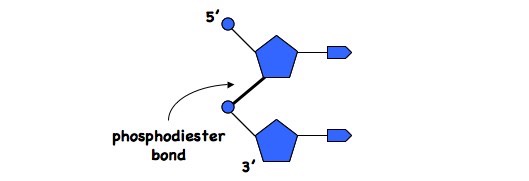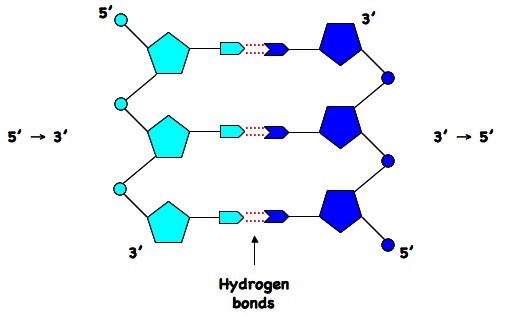3.3.1 Outline DNA nucleotide structure in terms of a sugar (deoxyribose), base and phosphate

3.3.2 State the names of the four bases in DNA
The four bases in DNA are:
Adenine Guanine Thymine Cytosine

- Adenine and guanine are purines (double ring bases)
- Thymine and cytosine are pyrimidines (single ring bases)
3.3.3 Outline how the DNA nucleotides are linked together by covalent bonds into a single strand

- Nucleotides a linked into a single strand via a condensation reaction
- The phosphate group (attached to the 5'-C of the sugar) joins with the hydroxyl (OH) group attached to the 3'-C of the sugar
- This results in a phosphodiester bond between the two nucleotides and the formation of a water molecule
- Successive condensation reactions between nucleotides results in the formation of a long single strand
3.3.4 Explain how a DNA double helix is formed using complementary base pairing and hydrogen bonds
Two polynucleotide chains of DNA are held together by hydrogen bonds between complementary base pairs
- Adenine pairs with thymine (A=T) via two hydrogen bonds
- Guanine pairs with cytosine (G=C) via three hydrogen bonds
Thymine Adenine Cytosine Guanine

In order for bases to be facing each other and thus able to pair, the two strands must run in opposite directions (i.e. they are anti-parallel)
As the polynucleotide chain lengthens, the atoms that make up the molecule will arrange themselves in an optimal energy configuration
This position of least resistance results in the double-stranded DNA twisting to form a double helix with approximately 10 - 15 bases per twist
3.3.5 Draw and label a simple diagram of the molecular structure of DNA
